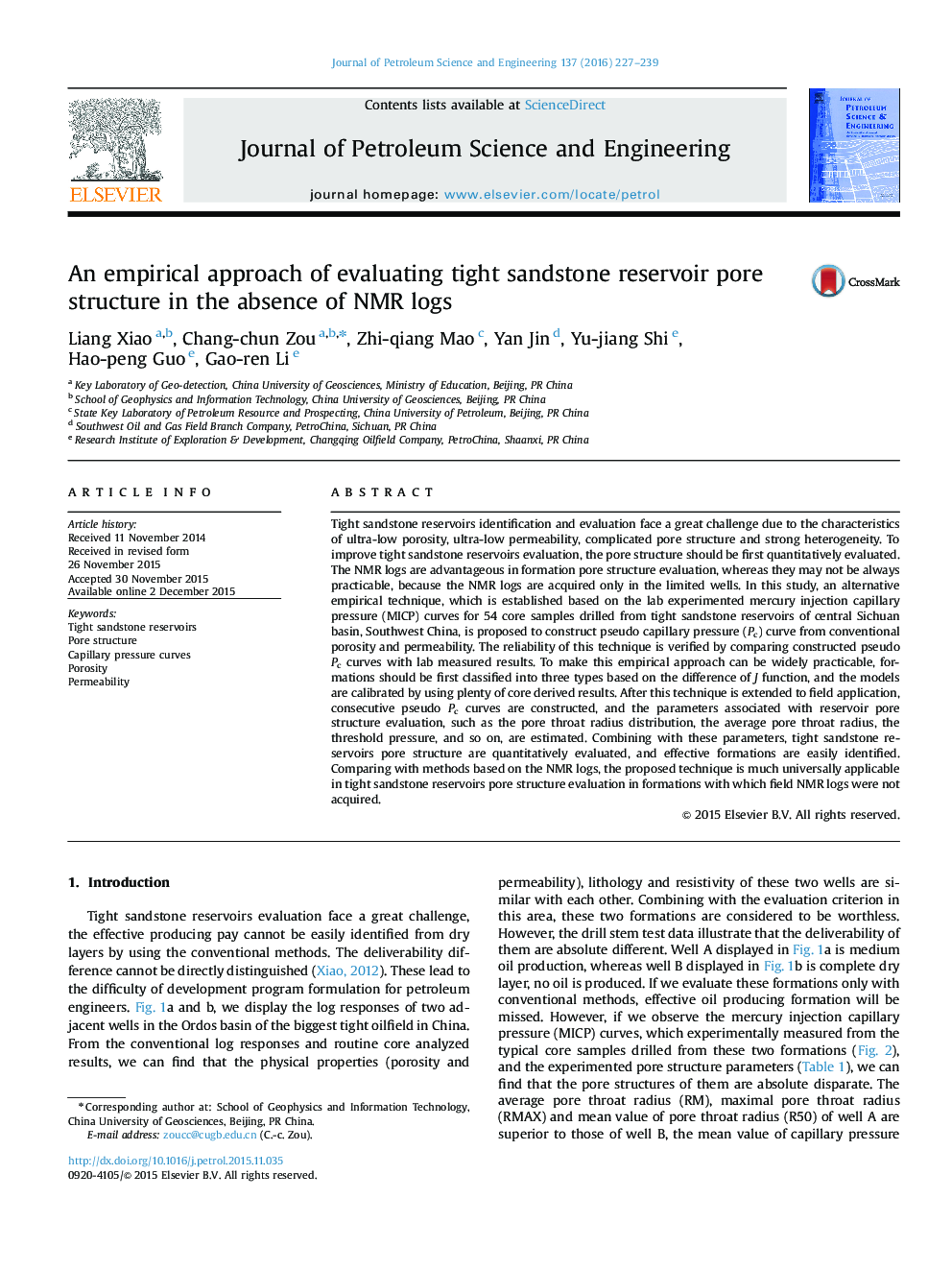| Article ID | Journal | Published Year | Pages | File Type |
|---|---|---|---|---|
| 1754652 | Journal of Petroleum Science and Engineering | 2016 | 13 Pages |
•The relationship between rock pore structure and productivity is demonstrated, and the necessity of quantitatively evaluating rock pore structure in tight sandstone reservoirs is analyzed.•An empirical technique of constructing pseudo capillary pressure curves from conventional logs is proposed. The advantage of this technique analyzed.•The involved models are calibrated, this makes the empirical technique can be widely applied.
Tight sandstone reservoirs identification and evaluation face a great challenge due to the characteristics of ultra-low porosity, ultra-low permeability, complicated pore structure and strong heterogeneity. To improve tight sandstone reservoirs evaluation, the pore structure should be first quantitatively evaluated. The NMR logs are advantageous in formation pore structure evaluation, whereas they may not be always practicable, because the NMR logs are acquired only in the limited wells. In this study, an alternative empirical technique, which is established based on the lab experimented mercury injection capillary pressure (MICP) curves for 54 core samples drilled from tight sandstone reservoirs of central Sichuan basin, Southwest China, is proposed to construct pseudo capillary pressure (Pc) curve from conventional porosity and permeability. The reliability of this technique is verified by comparing constructed pseudo Pc curves with lab measured results. To make this empirical approach can be widely practicable, formations should be first classified into three types based on the difference of J function, and the models are calibrated by using plenty of core derived results. After this technique is extended to field application, consecutive pseudo Pc curves are constructed, and the parameters associated with reservoir pore structure evaluation, such as the pore throat radius distribution, the average pore throat radius, the threshold pressure, and so on, are estimated. Combining with these parameters, tight sandstone reservoirs pore structure are quantitatively evaluated, and effective formations are easily identified. Comparing with methods based on the NMR logs, the proposed technique is much universally applicable in tight sandstone reservoirs pore structure evaluation in formations with which field NMR logs were not acquired.
